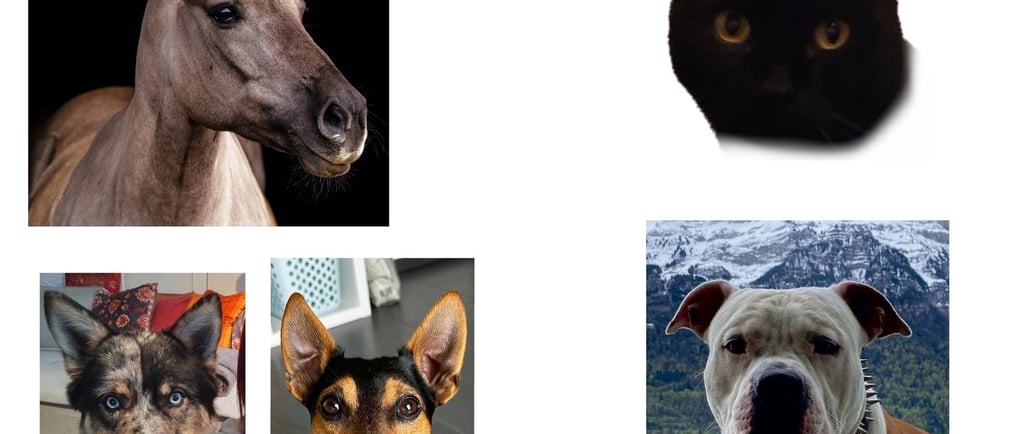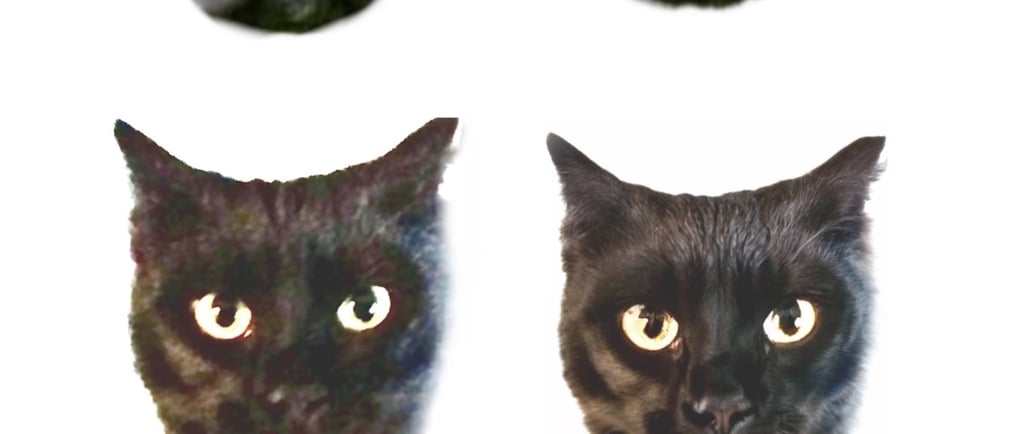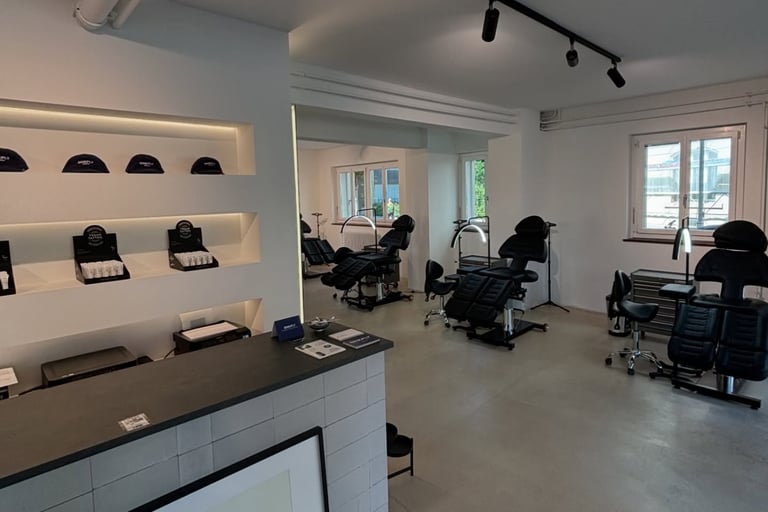Tattooing Black or White Dogs: The Key Is in the Photo, Not the Difficulty
In this article, I’ll answer one of the most common questions I get: “Is it difficult to tattoo a black or white dog?” The real challenge isn’t the color of the fur—it’s the quality of the photo. I’ll explain why a good image is crucial for achieving a realistic tattoo and what to do if you only have old or low-quality pictures. I’ll also share practical tips for taking the best photo of your pet and showcase real examples of good and bad references. If you’re thinking about getting a tattoo of your dog or cat, this blog will help you understand how to prepare the best reference to ensure a tattoo that truly captures their essence and appearance.
3/17/20252 min read


Quick Summary 🚀
If you’re wondering whether tattooing a black or white dog is harder, the answer is no. What matters isn’t the fur color but the photo’s quality. In this article, you’ll learn:
• Why a good photo is crucial for capturing realistic details.
• Common photo issues that ruin a tattoo (and how to avoid them).
• Solutions for old or blurry images.
• Practical tips to take the perfect photo.
Ready to ensure your tattoo faithfully reflects your pet? Keep reading!
Is It Hard to Tattoo a Black or White Dog? 🐾
A frequent question I get is: “Is tattooing a black or white dog difficult?” The short answer is no, but the real challenge isn’t the fur—it’s the information the photo provides.
As a realism specialist, my work depends on the details I can see. If the photo lacks textures, shadows, or defined features, I can’t invent them. That’s where digital tools come in to recover lost details. Here’s how to prepare the ideal image for your tattoo.
Why Photo Quality Is Essential 📸
“I tattoo what I see”: If the image is clear and detailed, the result will be faithful. If not, we face issues like:
• Pixelated zoom → Enlarging distorts the image and blurs details.
• Flat fur → A black dog isn’t a solid color—it has highlights and depth!
• Lifeless eyes → I need irises, pupils, and reflections to add expression.
• Blurry nose/whiskers → Key features that define your pet’s face.
Check examples at the end to compare good vs. bad photos.
Only Have Old or Low-Quality Photos? There’s Hope! 🛠️
If your pet has passed and you only have worn or blurry images, all isn’t lost. I use tools like:
• AI technology → Restores fur, eyes, and nose details.
• Light adjustments → Recovers hidden shadows or highlights.
• Digital reconstruction → Uses realistic references for blurry areas.
Important: I always confirm with you that enhanced images preserve your pet’s essence. We don’t invent features—we rescue what the original photo hides.
How to Take the Perfect Photo for Your Tattoo 📷
If you can still take new photos, follow these tips:
• Natural light → Best for capturing nuances (avoid harsh shadows, like midday sun).
• Focus on the face → Physically move closer—no digital zoom!
• Balanced lighting → Avoid overexposure or darkness.
• Key details → Ensure the nose, eyes, and whiskers are sharp.
Pro tips for dark/light fur:
• Black dogs: Capture light reflections showing blues, grays, or browns.
• White dogs: Highlight soft shadows to define their shape.
Conclusion: Realism Depends on What I See 🎨
The difficulty isn’t the color—it’s capturing your pet’s essence through a detailed photo. With a great image, the tattoo becomes a faithful tribute. If the photo falls short, I use tech to recover hidden details, but I never invent features.
Need help with your photos? Send them to me—I’ll help enhance them. Let’s make the tattoo reflect your furry friend’s unique personality!
Visual examples below. May this guide inspire you to honor their memory beautifully!
💬 Need personalized advice?
Reach out! Let’s ensure every tattoo detail tells their story.


LOCATION
© 2025. All rights reserved.
Jon ist der Inhaber des Sinkply Tattoo Studios in Zürich.
Das Studio befindet sich an der Staffelstrasse 8, 8045 Zürich und trägt den Namen Sinkply Tattoo Shop.


Möchtest du dir dein Haustier tätowieren lassen?
Kein Stress – aber wenn du schon darüber nachdenkst, könnte es der richtige Moment sein, den nächsten Schritt zu machen.
Schreib Jon, um deine Idee in Ruhe zu besprechen und gemeinsam herauszufinden, wie wir sie auf die Haut bringen können.
📸 Schick uns ein paar gut beleuchtete Fotos deines Haustiers – am besten aus der Nähe.
🖋️ Sag uns, an welcher Körperstelle du das Tattoo möchtest und wie groß es ungefähr sein soll.
📅 Wenn alles passt, finden wir gemeinsam einen passenden Termin.
Klick auf den WhatsApp-Button oder schreib uns direkt an +41 77 212 07 67.
Wir sind da, um dein Tattoo mit Bedeutung und Liebe zum Detail umzusetzen
